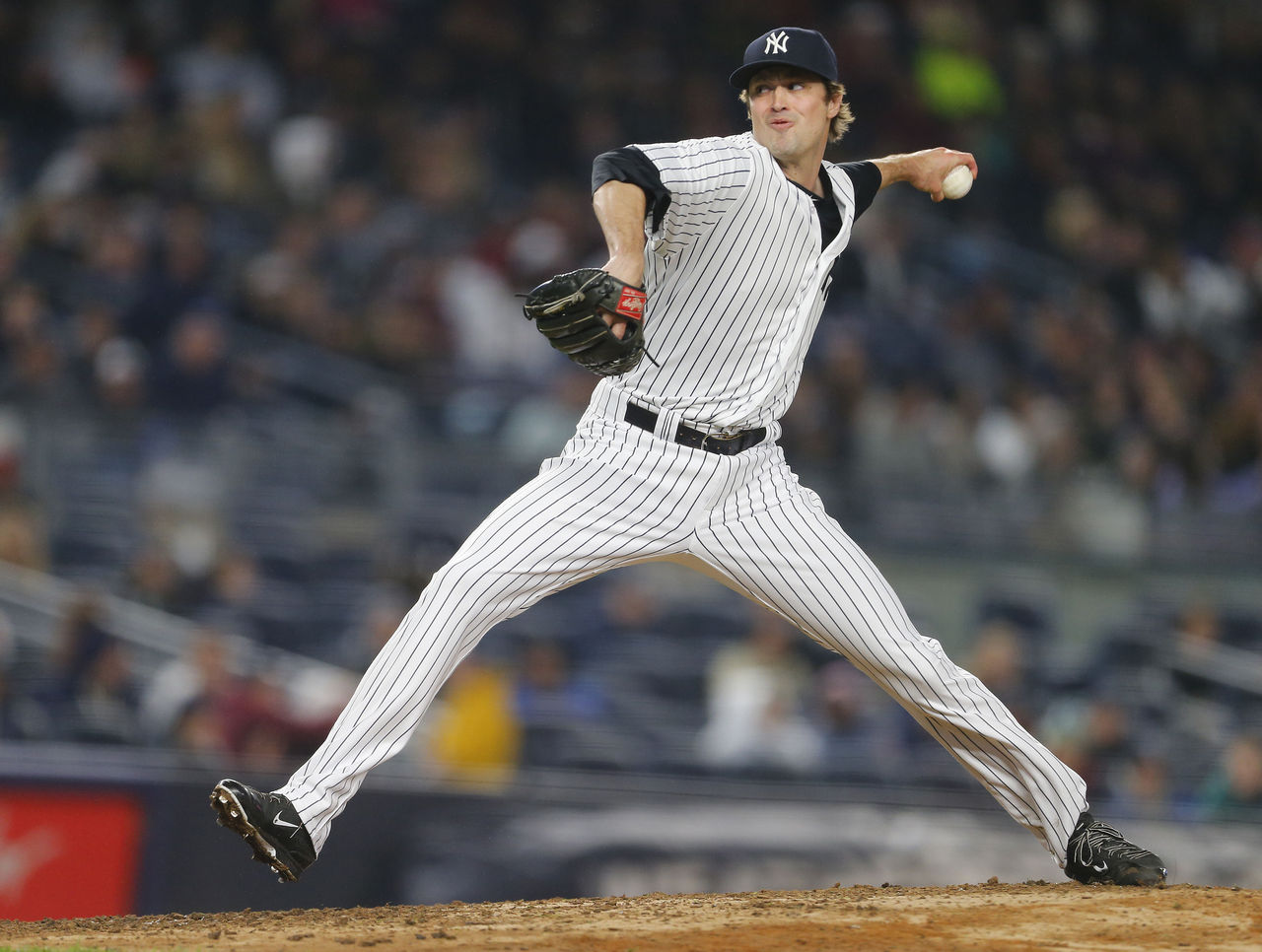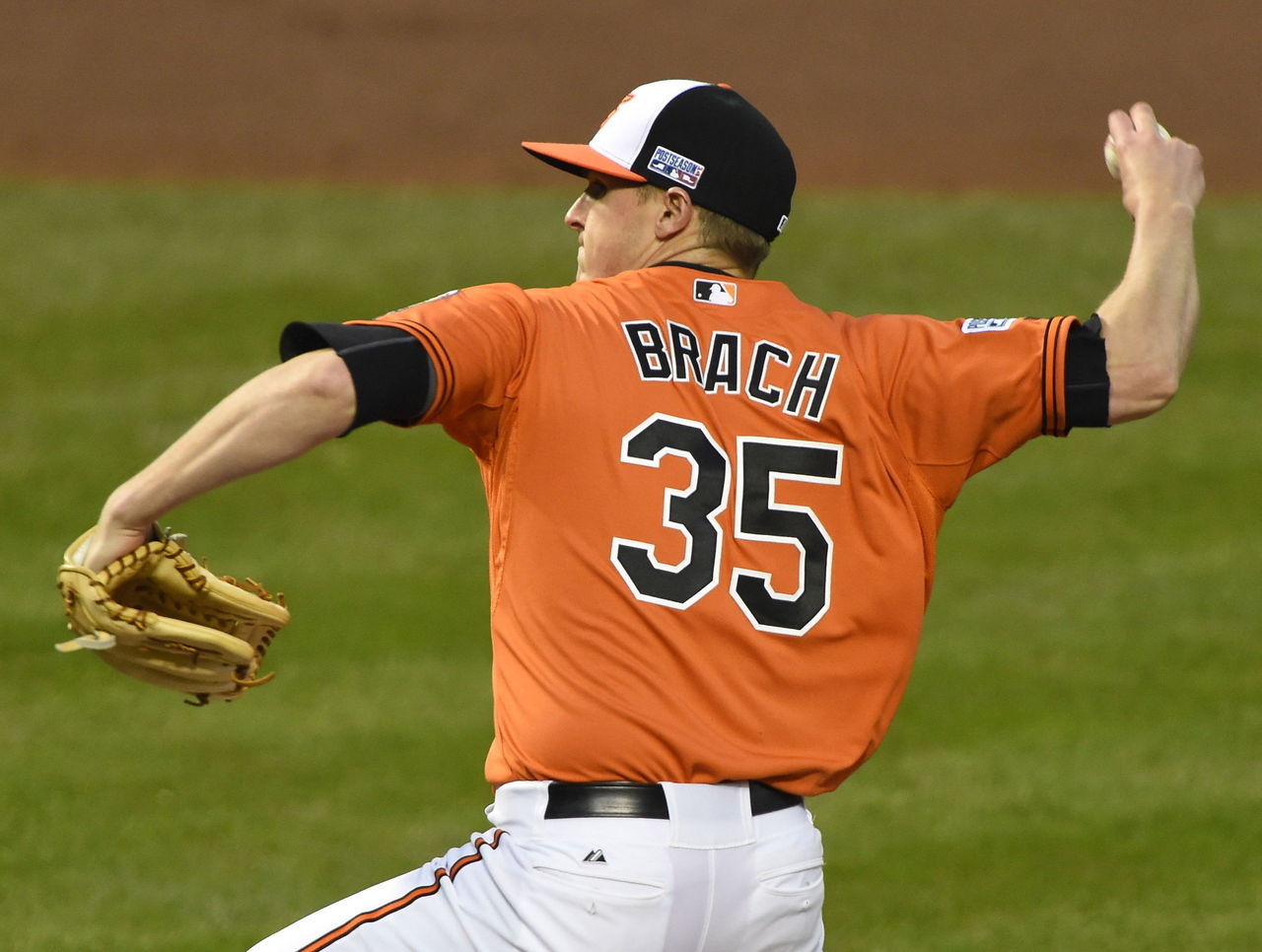Relief Pitchers Exist in Daily Fantasy - But Do They Matter?
While creating a virtual bullpen plays a significant role in success at season-long fantasy, it has little place in daily fantasy formats. Pitcher usage is unpredictable; beyond knowing who the starter is for each team, only game flow can determine when (and if) a reliever will see action.
And yet DFS sites still include relief pitchers in their player pools. You typically have to do some digging, but they're there. With no additional points giving to relief-centric stats (i.e. Saves), the question isn't why they exist, but whether or not their inclusion on a slate presents any possible value to fantasy players.
What Does a Reliever Look Like?
The first thing to recognize is how to think of an RP in DFS terms. He's a minimum-priced pitcher, still more expensive than the average batter but significantly cheaper than the average starting pitcher.
The second thing is that relief pitchers' ceilings are most definitely capped. You're never going to get a complete game shutout or 10 strikeouts from an RP. You're lucky if you get two innings.
What you do get from the best relievers is a consistent floor when they do pitch. The expectation of an elite bullpen option is a shutdown inning: no runs, limited walks and hits, and generally higher strikeout rates.
New York Yankees set-up man Dellin Betances has struck out two or more batters in 10 of his 18 appearances; in six of those outings, he tallied three-plus Ks. Unless your name is Clayton, Max or Madison, you're not going to be able to match that kind of production on a per-inning basis.
But the most usage Betances has seen in any one game this season was 1 1/3 innings. His May 14 outing against the White Sox was one of his best on the season as far as traditional DFS scoring. He struck out all four batters he faced, with no hits, walks or earned runs against. That's his cap.
That stat line scored roughly the same as a hitter recording a pair of singles, a walk, an RBI and a run. Betances at his very best is valued similarly to a middle-of-the-order bat having an above-average day at the dish.

Practical Usage
We've established that the best relief pitchers are:
- devastatingly efficient;
- relatively affordable;
- limited in terms of game-to-game usage and innings pitched
If there's any logical place to deploy a player like this, it's not in a tournament format, where pools are usually won and lost by mid-tier starters churning out high-strikeout, ace-level performances.
RPs are also not going to offer much value on large slates, where the need to save money is usually mitigated by a deeper player pool; the more players that the pricing algorithm has to account for, the higher the chances of an obvious salary discrepancy, leading to savings.
Here's the scenario where rostering a reliever could pay dividends: as the second pitcher on a two-pitcher cash game lineup. Specifically, if the starting pitching options are top-heavy on a given day, treat it like a one-pitcher format, avoiding unattractive starting pitchers and using the budget savings to significantly improve the lineup's hitters while still rostering an ace.
Here is a sample two-pitcher lineup from the main slate for Wednesday, May 18, which features a reliever:
| POS | NAME | OPPONENT |
|---|---|---|
| P | Johnny Cueto (SF) | at SD |
| P | Andrew Miller (NYY) | at OAK |
| C | Tony Wolters (COL) | at STL |
| 1B | Paul Goldschmidt (ARI) | vs. NYY |
| 2B | Jose Altuve (HOU) | at CWS |
| 3B | Jung Ho Kang (PIT) | vs. ATL |
| SS | Carlos Correa (HOU) | at CWS |
| OF | Mike Trout (LAA) | vs. LAD |
| OF | Bryce Harper (WAS) | at NYM |
| OF | Trayce Thompson (LAD) | at LAA |
I'm not sure it would be possible to build a higher floor than this while remaining under budget.
Not only does this lineup include Cueto, arguably the best pitcher on the slate, but by including cheap high-usage reliever Miller, the lineup isn't forced to punt on hitting in any significant way. In fact, other than Wolters, Kang and Thompson, you could argue that these batters are the very best at their respective positions.
Without selecting multiple low-upside, defense-first specialists, you would be hard-pressed to roster high-floor veterans on both pitching and hitting side. The improved outlook on the batting side makes up for the lower ceiling that Miller projects.

Which Relievers to Target
Moving forward, we'll have to consider how to better predict bullpen usage from game to game. For now, the best policy is to look for weak starters, minor-league call-ups, returnees from injury or any other starter with a high likelihood of facing a pitch limit or innings count. The shorter a starter stays in the game, the more relief innings will be up for grabs for the bullpen.
As there's no variance in pricing between relief options, target RPs that have historically seen higher usage, both in terms of appearances and innings pitched. Strikeout rates above 9/9 innings will also give a boost. Here are some of top players from the past 365 days that match that criteria:
| NAME | G | IP | ERA | K/9 |
|---|---|---|---|---|
| Brad Brach (BAL) | 66 | 83 1/3 | 2.05 | 9.61 |
| Dellin Betances (NYY) | 74 | 81 1/3 | 2.10 | 14.94 |
| Fernando Rodriguez (OAK) | 66 | 76 | 2.96 | 9.71 |
| Kevin Siegrist (STL) | 80 | 73 | 2.59 | 11.34 |
| Pedro Strop (CHC) | 76 | 67 2/3 | 2.66 | 11.31 |
Other than that, avoid pitchers who have seen relief action on consecutive days while placing greater emphasis on veteran pitchers with established roles who have not seen game action in several days. Managers don't like to overwork their best arms, but they also don't like their relievers to get rusty.
There is an opportunity here to increase the chance of cashing in a 50/50 contest. While the appeal of this strategy is limited to select circumstances, there are several clear hypothetical benefits - and in fantasy sports, there are always potential rewards in searching for upside where others see none.